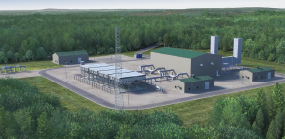The manner in which value is created in the natural gas industry is changing, and the role of pipelines in that value creation chain continues to evolve. Since R&D is one of the pillars that supports the strategy of any business, such changes call for a re-assessment of the R&D agenda for this industry. This need is further intensified by the fact that the natural gas pipeline industry’s R&D needs have historically been met in a collaborative manner, owing to the lack of competition. In today’s competitive environment, the balance between collaborative and proprietary R&D will depend on the competitive advantage that is sought from a particular technological innovation.
This industry needs to view R&D as an investment in the future of the business rather than a pass-through cost. While the outcome of R&D by its nature cannot be fully predicted, risk-adjusted targets for return on investment should be clearly identified before launching new R&D initiatives. Also, business objectives must be clearly defined to provide the context for defining the highest impact R&D initiatives.
Collaborative R&D was the specific focus of this study. To assess future collaborative R&D needs, Battelle developed a set of scenarios describing potential alternative future simulations of the natural gas pipeline industry over the next decade. These potential alternative futures incorporated major business issues identified through expert focus groups, executive interviews, reviews of prior studies, and interviews with selected regulators. The impact of potential disruptive events, such as a major incident or significant supplyldemand imbalance, was evaluated using the scenario model.
The most likely scenario was characterized by significant pipeline expansion and a focus on transportation of natural gas. Upside scenarios were associated with retail initiatives and increased success in managing relationships with regulators, the combination of which led to higher returns. Downside scenarios were typically associated with disruptive events, which increased cost and decreased flexibility in connection with regulatory and public backlash against the industry as a whole. However, even in the absence of disruptive events, downside scenarios were generated that were associated with inadequate cost management under reasonably easygoing regulation.
Based on these alternative futures, the impact of collaborative research and development in five major categories was tested using the industry scenario model developed in this study. Those categories were:
- Environmental compliance,
- Safety and reliability,
- Capacity and deliverability,
- End use, and
- Information technology.
The R&D categories were cross-impacted against the business drivers identified in the base scenario model, and the cross-impacts of those business drivers on the R&D categories also were evaluated. Based on these analyses, a portfolio approach to recommending R&D investments was used. Using a "financial planner" analogy, several asset allocation schemes were suggested depending on the business objective for the investment. These schemes were based in part on collaborative R&D approaches adopted in other competitive industries (chemical, automotive, and pharmaceutical). For illustration, four model portfolios were developed with approximate annual budgets: (1) the cost-effective pipeline ($1 5-20MMlyr), (2) the flexible pipeline ($1 0-1 SMMIyr), (3) the invisible pipeline ($5-1 OMMlyr), and (4) the retail pipeline ($1 -SMMlyr, plus investments by other industry sectors and proprietary initiatives).
At a minimum, industry should establish a core collaborative technology program based on the first model portfolio which addresses key, non-competitive safety and environmental issues. Additionally, consortia built around the other model portfolios should be considered for companies with strategies that depend on better asset utilization, system expansions, and/or retail initiatives.



